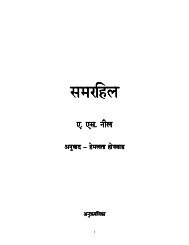String Games - Arvind Gupta (1.1 Mb Pdf)
String Games - Arvind Gupta (1.1 Mb Pdf)
String Games - Arvind Gupta (1.1 Mb Pdf)
You also want an ePaper? Increase the reach of your titles
YUMPU automatically turns print PDFs into web optimized ePapers that Google loves.
INTRODUCTION<br />
<strong>String</strong> is used for a number of things - from tying parcels to making bags and nets. Everyone<br />
needs string or something to tie with. This ‘something’ is different in different parts of the world.<br />
The Eskimo uses thin strips of sealskin to lash together his sledges or to fasten an axe-head to its<br />
shaft. Vegetable fibres are a very common form of ‘string’ among natives - we ourselves use<br />
raffia in a number of ways. Sutli is very commonly used in India for tying things together. Some<br />
native Australians use human hair - tile women grow it for their men folk to use - while others<br />
use the great sinews from the Kangaroo’s legs .<br />
One common habit which almost everyone has is of fiddling and playing with anything that<br />
happens to be in their hands. You see it in buses when people fold or pleat their tickets and you<br />
see it in when pieces of string are knotted and twisted about.<br />
It is easy to picture a group of natives idling over the mending of their fishing net One person<br />
fiddles with an odd length of twine tied into a loop until his neighbour exclaims ‘Why, you have<br />
just made a house of string!’ Someone else might now be inspired to copy the same string<br />
picture. This is probably how most of the 750 documented string games were invented.<br />
We can’t be very sure but this is how many of the string games started. For you go where you<br />
will - to the arctic north or to the coral islands of the Pacific – string games are everywhere. The<br />
Eskimos with their long winter darkness, lasting for months, had plenty of time and became very<br />
clever at making string pictures. They will show you string pictures of deer, bears and other<br />
animals, of birds, kayaks (skin boats) and such like. The Navaho and Apache natives of<br />
America are adept at making tipis (tents) and little animals like coyotes and rabbits. Each race<br />
has its own string figures and when you come to think of it this is natural - for how would an<br />
Eskimo make a string picture of a palm tree, or an Australian of a polar bear.<br />
<strong>String</strong> games are great fun. They exercise your memory and your imagination. They are great for<br />
hand and eye coordination. At times, the step-by-step instructions and illustrations for making a<br />
string figure might look difficult but the actual making of the figure might be really simple! So,<br />
don’t panic if you have problems in your first few attempts Just go back to the beginning and<br />
start again. Soon you will have a good ‘feel’- for the string.<br />
It is best to start with the easier figures and as you feel more comfortable to go oil to make those<br />
figures that have more steps and are more complicated. At first you will have to remember all the<br />
steps. But very soon your fingers will remember them for you. So learn these string figures and<br />
share them with your friends. They probably will show You some new ones. If you keep<br />
experimenting, who knows you might invent some wonderful string figures of your own. So<br />
always carry a string in your pocket.


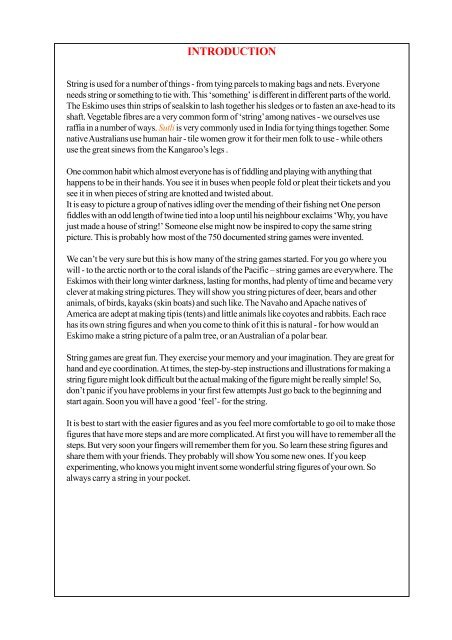
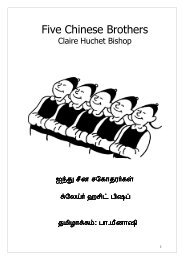
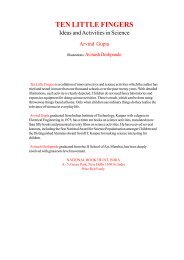
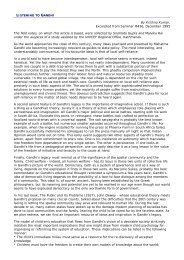
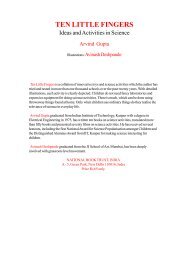




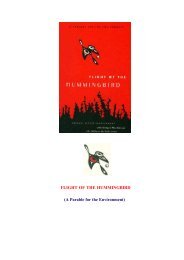

![tq,a] diM+s vkSj vk/qfud ekuo - Vidya Online](https://img.yumpu.com/31264147/1/190x245/tqa-dim-s-vksj-vk-qfud-ekuo-vidya-online.jpg?quality=85)

